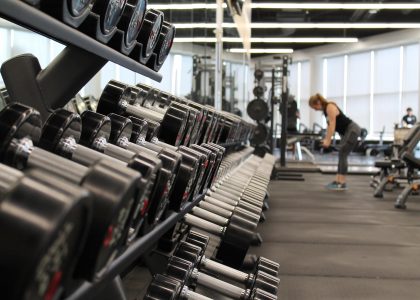Are you looking for a 10 km training plan that is also good for something?
Then you have struck gold.
In this article, let me bring you closer to what your running training is all about and how you can distinguish a good from a bad 10 km training plan.
Let’s go!
Basic training principles for your 10 km training plan
The nice thing about these sports science principles: They apply not only to a 10 km run, but of course to every form of endurance training.
If you internalize them, you will be able to distinguish a good from a bad training plan in other sports as well.
That’s them:
1. The principle of the training-effective stimulus
Running in itself is great for your health. However, if you also want to achieve an increase in performance, you can leave your comfort zone. You can only improve if you set stimuli that are just strong enough to not overwhelm you, but force you to move out of your comfort zone.
To put it simply: If you can run 5 kilometers in a row and never run again, the 10 kilometers could become a problem in a competition.
2. The principle of individualized loading
You probably already know my work P.A.T. Bodyweight training.
Here, too, the point is to adapt the load so individually to you that you are neither under nor overburdened.
This is exactly what this principle is based on.
Simplified: If you train according to the training plan of a professional runner, you will be overwhelmed. If he works out according to your plan, he will not improve.
3. The principle of progressive increase in load
If you follow the first principle, you will improve and your body will adapt.
This means that with the same training stimulus with which you achieved good results a few months ago, you will no longer win a flower pot today.
Simple check for your training plan 10 km: If the first week differs significantly from the penultimate in scope and intensity, then you can assume that this principle has been taken into account.
4. The principle of the correct loading sequence
Which comes first: strength or endurance training?
But let’s go one level deeper, we’re already doing endurance training while running. So this is about the right sequence of a training session. You should also know that technical training or sprints should always be at the beginning of a training session, as you are still fresh and concentration is high.You have asked you this question before? Well, it basically all depends on what your goal is.
In practice this means: Always do run ABC exercises at the beginning of your unit – by the way, they also represent a nice warm-up.

5. The principle of changing loads
The methods used in your 10 km training plan should alternate regularly. This also varies the intensity and scope of the training units.
In this article you will learn which training methods you can use when training for your run.
The problem with constant loads is on the one hand the increased likelihood of injury due to overload and on the other hand the relatively fast onset of stagnation in performance.
In practice it looks like you don’t do a slow run three times a week, but rather, for example, harder interval training, a driving game and a slow, long run. The following week it looks a little different again.
6. The principle of repetition and continuity
Once is never.
Unfortunately, this is also the case with your running training.
A successful run doesn’t make you better. Only the sum of many successful runs makes it. If you are training for a competition, you should start your training at least 10 weeks in advance.
The cool thing about it: The more you are at the beginning, the faster and with less effort you can expect success.
Use this unfair advantage!
7. The principle of the optimal relationship between exercise and relaxation
Did you know that you don’t get better during training, but only in the recovery phase?
You can imagine it like this: Your performance drops during training (you could not achieve the same performance again immediately after training). Then you recover and your body ideally adds a little more, so that you not only recover completely, but also improve a little.
That doesn’t happen from workout to workout. But with the right training plan 10 km you will continuously get better.
What else to look out for
All of the principles presented above are principles of loading. But there are more training principles.
The bottom line is that you can also divide your training into cycles. I did it in the 10 week training plans so that there were fewer and easier training units in week 5 and in week 10, because of recovery and tapering.
Furthermore, the principle of specialization (the better you get, the more you can specialize in order to improve yourself even further) and proportionalization (which concerns the right balance between basics and specific training).







